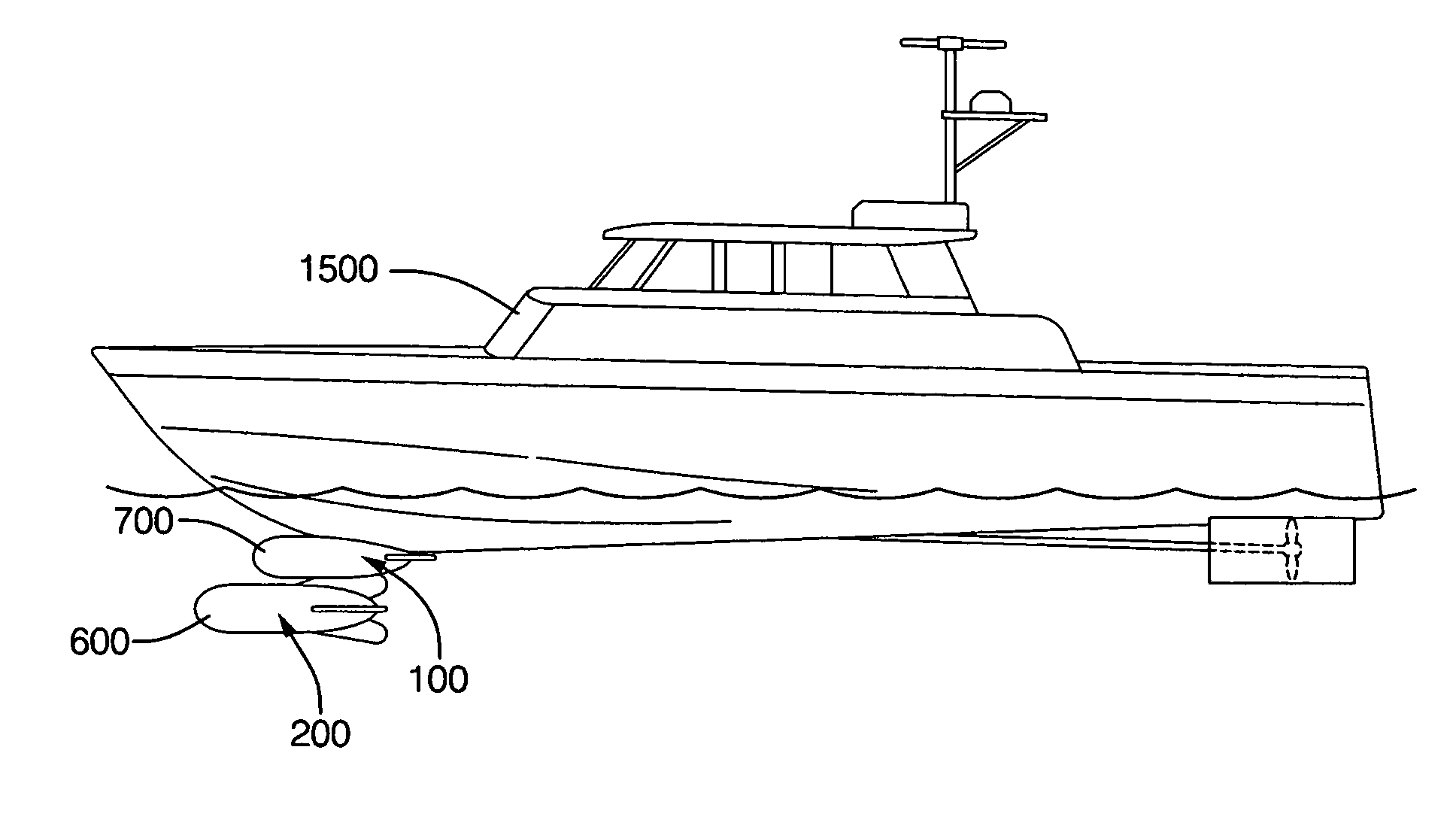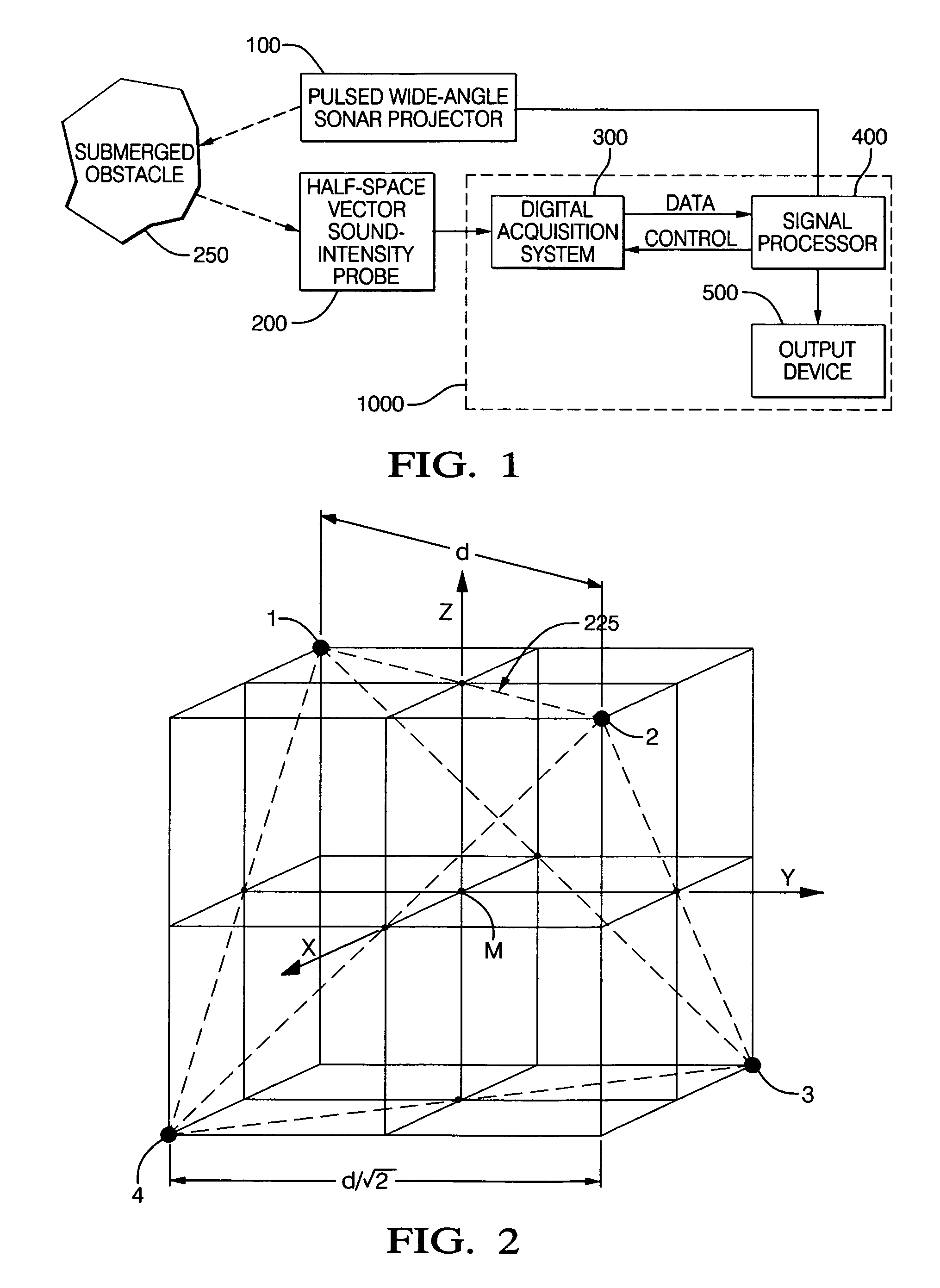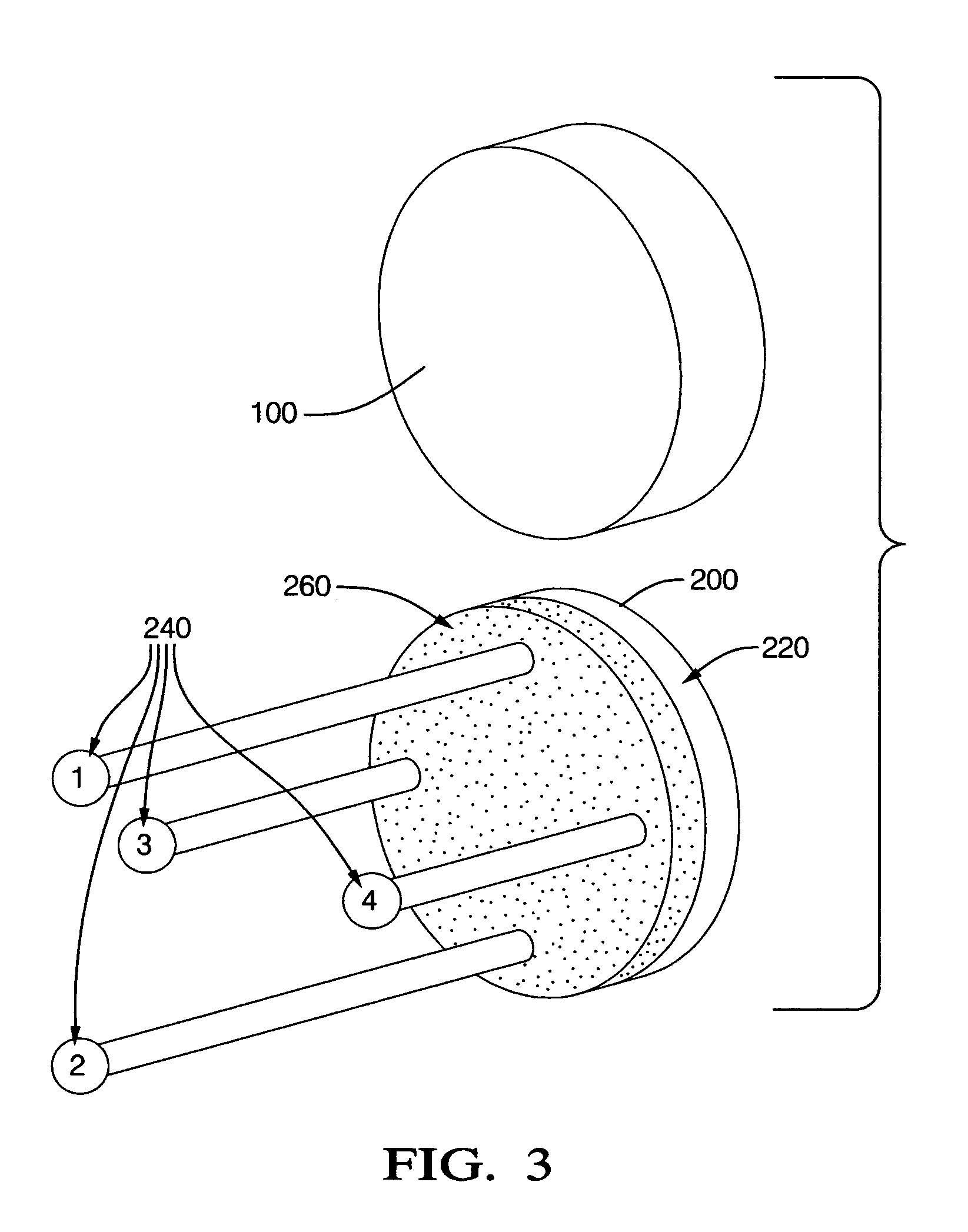Forward-looking sonar for ships and boats
a sonar and forward-looking technology, applied in the field of sonar systems, can solve the problems of inability to penetrate very far into sediment-laden water, fish finders, acoustic cameras and narrow-beam search devices operating at higher frequencies
- Summary
- Abstract
- Description
- Claims
- Application Information
AI Technical Summary
Benefits of technology
Problems solved by technology
Method used
Image
Examples
Embodiment Construction
[0020]FIG. 1 is a block diagram showing the different components of the forward-looking sonar for ships and boats. A signal processor 400 drives a pulsed, wide-angle sonar projector 100. The projector 100 operates at frequencies of roughly 30 kHz and below, in order to penetrate sediment-laden water for distances of hundreds of meters or more. The projector 100 generates echo pulses from submerged obstacles 250 that are received by a half-space, vector sound-intensity probe 200. The probe 200 is linked, by means of a digital-acquisition system 300, to a digital signal processor 400. The signal processor 400 uses the echoes received by the probe 200 to detect and determine the location of submerged obstacles 250 ahead of the ship or boat. This information is displayed on an output device 500. The distance and direction of an object determine its location. Distance is calculated using time-of-flight and the sound-intensity vector determines direction. The sonar projector 100 and vecto...
PUM
 Login to View More
Login to View More Abstract
Description
Claims
Application Information
 Login to View More
Login to View More - R&D
- Intellectual Property
- Life Sciences
- Materials
- Tech Scout
- Unparalleled Data Quality
- Higher Quality Content
- 60% Fewer Hallucinations
Browse by: Latest US Patents, China's latest patents, Technical Efficacy Thesaurus, Application Domain, Technology Topic, Popular Technical Reports.
© 2025 PatSnap. All rights reserved.Legal|Privacy policy|Modern Slavery Act Transparency Statement|Sitemap|About US| Contact US: help@patsnap.com



